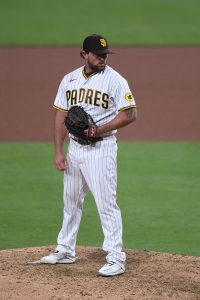The Yankees have agreed to a minor league contract with right-hander Asher Wojciechowski and invited him to Major League Spring Training, reports USA Today’s Bob Nightengale (Twitter link). The ISE client would earn $750K if he cracks the Yankees’ big league roster in 2021.
The 32-year-old Wojciechowski spent the 2019-20 seasons with the Orioles, who acquired him from Cleveland in exchange for cash midway through the 2019 campaign. While he at first looked to have been picked up just to make a spot start or two, Wojciechowski held his own throughout the balance of the 2019 season, earning a spot in the O’s rotation both that year and again in 2020 in the process. The 2020 season, however, proved another story, as Wojciechowski was tagged for a 6.82 ERA in 37 innings before being cut loose by the O’s.
Overall, Wojciechowski has spent parts of four seasons in the Majors but struggled to a 5.95 ERA through 198 innings. He’s turned in a respectable 21.6 percent strikeout rate in that time, sitting right around the league average, and Wojciechowski has a solid track record in Triple-A, as well. Through 635 innings at the top minor league level, he’s logged a 4.27 ERA.
Wojciechowski has only hit the injured list four times in his professional career — twice within a year of being drafted back in 2010 — so he’s a durable depth piece to stash in the upper minors for a Yankees club that currently has some question marks on its starting staff.

